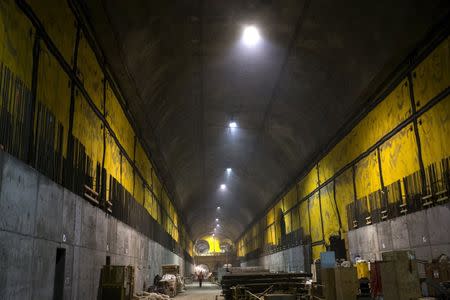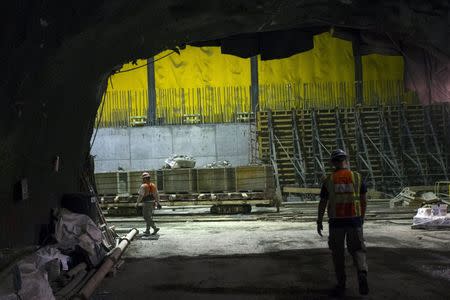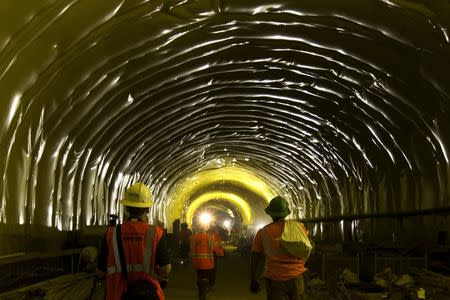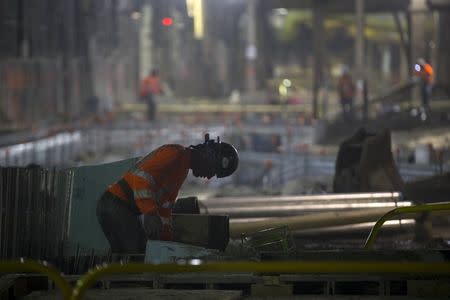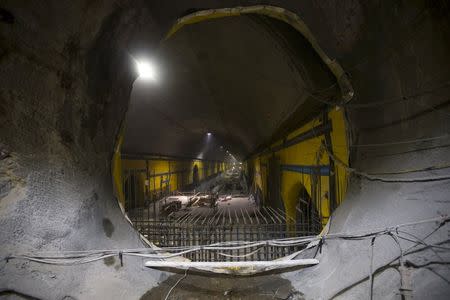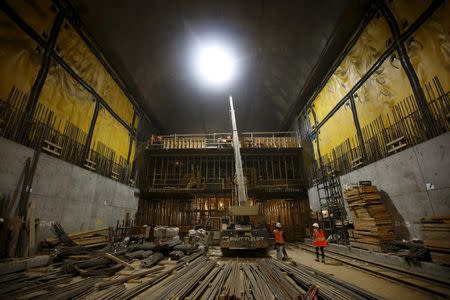In caverns deep below N.Y. streets, train terminal taking shape
By Joseph Ax
NEW YORK (Reuters) - Fifteen stories beneath midtown Manhattan, hundreds of workers are slowly converting massive subterranean chambers into a new terminal for the Long Island Railroad, the United States' busiest commuter rail system.
Two enormous caverns, each several city blocks long, will house eight tracks and platforms, serving an estimated 162,000 customers a day, officials from the Metropolitan Transportation Authority said during a tour of the planned station on Wednesday.
A $10.2 billion project, known as East Side Access, will divert some Long Island Railroad trains from their current terminus at overcrowded Pennsylvania Station on the West Side to Grand Central. It will shorten riders' commute to New York by 30 to 40 minutes a day, said Michael Horodniceanu, who heads up capital construction for the MTA.
"This is the largest transit project in the country," said Horodniceanu as he stood in what will eventually be a 350,000-square-foot (33,000-square-meter) passenger concourse.
The project has been plagued by major cost overruns and delays, but Horodniceanu said the station is on track to open in December 2022. It will reside below the current Grand Central Terminal, a hub for both the Metro-North commuter rail and the New York City subway system.
The sheer scale of the construction was on display as MTA officials led reporters through the caverns for the first time in years.
Groundwater trickled through exposed bedrock in the ceiling above the track tunnels, which were created by two 22-foot (6.7 m) boring machines. Mud squelched underfoot as workers cut through rebar in the dimly lit space underneath Park Avenue.
The Manhattan section includes more than 6 miles (10 km) of tunnels, and required the removal of enough pulverized rock to fill 75,000 trucks, Horodniceanu said.
"If we're going to be competitive with other capitals around the world, we need public transport," Horodniceanu said. "The time of moving people around in cars is over."
East Side Access is one of several major transit infrastructure projects either under way or recently completed in New York City, including the extension of the 7 subway line to the far West Side and the planned 2nd Avenue subway that should help alleviate overcrowding on the Lexington Avenue line.
The MTA last week approved a $29 billion five-year capital plan following a year of wrangling between city and state officials over how to divvy up the funding.
(Reporting by Joseph Ax; Editing by Mohammad Zargham)

